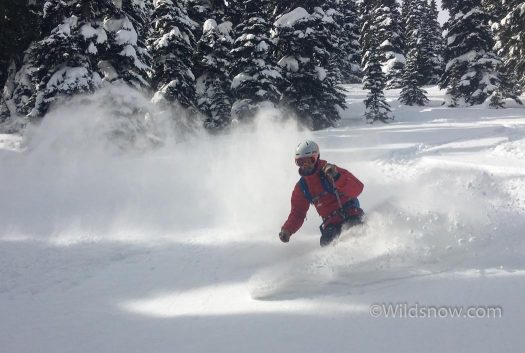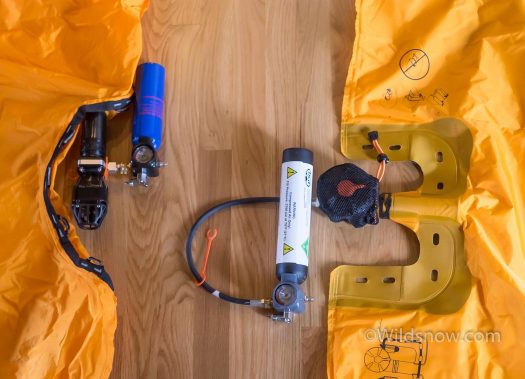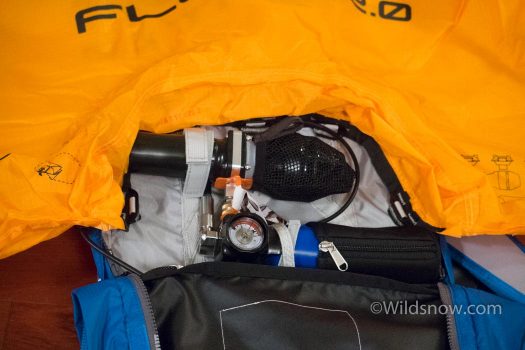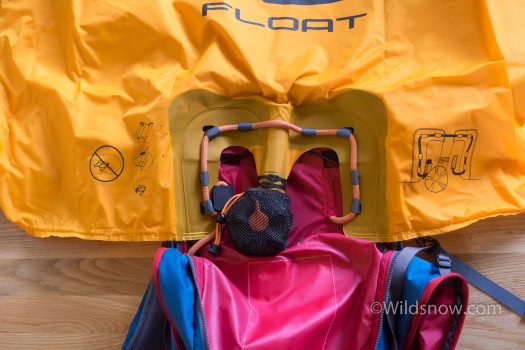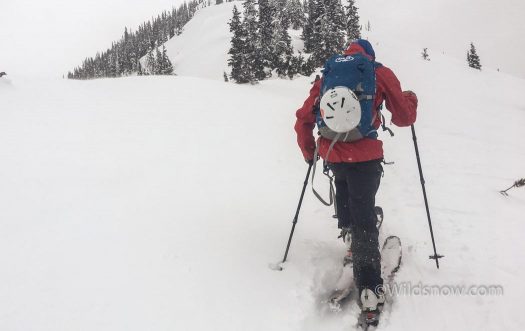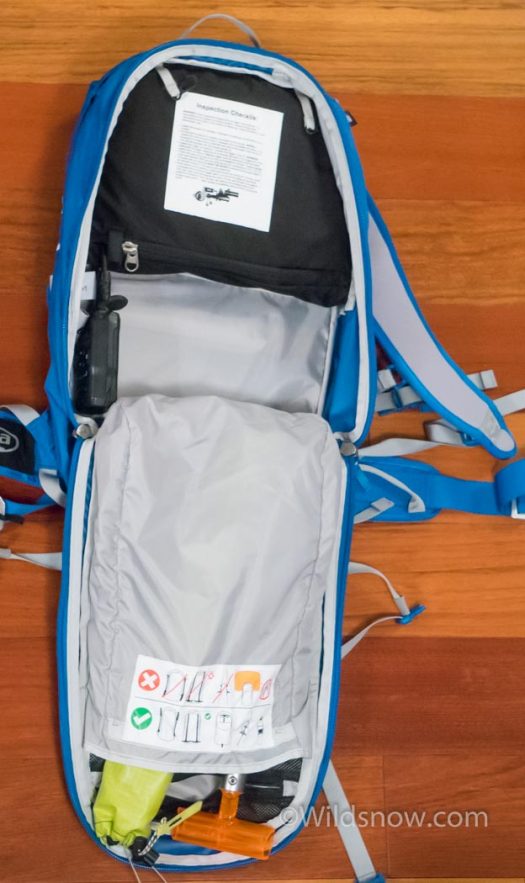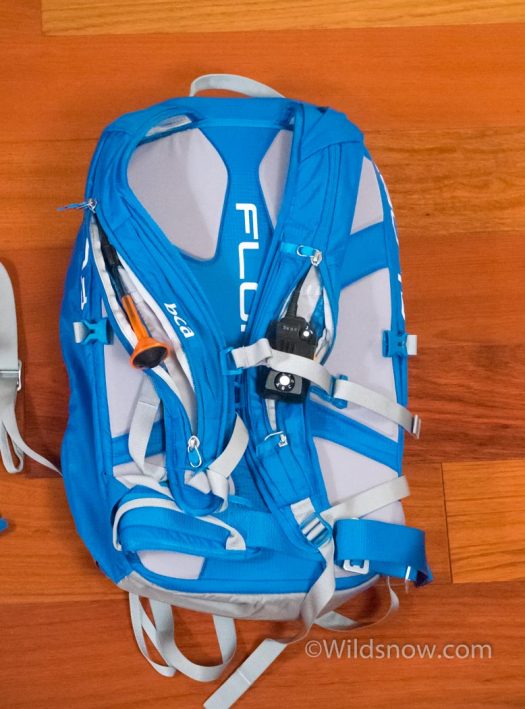I’ve been carrying one of BCA’s Float backpacks during much of my skiing the last few years. I like the fact that their system is somewhat light, easy to refill, and inexpensive.
Quite a few people still do not use airbag packs in the backcountry — I often ask them why they do not. I get various answers, from the pack design, cost, to their reduced efficacy in the treed terrain where many ski in winter in the PNW. In some cases, the obvious answer it the person is so careful about when and where they ski, they simply do not need such expensive and complex safety gear (a valid take if that’s really the case). Invariably, however, almost everyone says they’d be more likely to carry a balloon rucksack if they weren’t so darn heavy. On the occasional mid-winter “safe” day that I leave the airbag at home, I’m always impressed at how much I notice the loss of a few pounds off my back.
The future of airbags is weight reduction. Features such as multiple inflations or easy airline travel are nearly nothing compared to how much that rucksack drags you down while you’re trying to go up. Airbag packs are getting lighter, but we’re not there yet. Most are still ridiculously heavy compared to non-airbag versions. The minute someone makes a pack that is functional, has sufficient capacity, and is TRULY light weight, a zillion skiers are going to be strapping it on.
Although BCA has offered different pack styles over the years — and reduced weight significantly — the internal components of their airbag system had remained the same (and weighed pretty much the same) since first introduced in 2013. There’s only so much weight reduction you can achieve with textile pack design. Most of the excess weight is in the airbag system.
This year BCA introduced an updated version of their internal system. The main focus is saving weight and reducing the space that the system takes up inside the backpack, thus saving weight by virtue of the pack not needing to be as large for a given load. Awesome. The new system is an evolution of the old, and works in much the same way. Inflation still utilizes compressed air, and the same basic trigger system and connectors.
The main change to the system is the compressed air cylinder. The cylinder is reduced in size from the previous version by about 1/3. While the old cylinder holds 2500-2700 PSI air, the new cylinder is filled to 2800-3000 PSI, providing the same amount of inflation power.
The majority of weight savings comes from the cylinder, however BCA made other tweaks too. The new cylinder connects directly to the venturi system, eliminating a few inches of rubber hose. The venturi valve system is also re-designed to be smaller, and it enters the airbag on the side, rather than at the top, so that the burst zipper opens on the side.
The way the airbag is attached to the pack is another change — it appears to me to be simpler and better. The only part of the system that appears unchanged is the trigger.
The old system weighs in at 1394 grams, and the new is 1200 grams. Those weights include the airbag, venturi valve, trigger, and a full cylinder. The old cylinder weighs 654 grams (full), while the new shorter cylinder 558 grams (full). That’s a reduction of 194 grams (6.8oz). Significant.
There’s also a small amount of weight reduction in the pack itself, although that’s harder to anatomize. The new metal toggle attachment system is a bit lighter than the old cord, and the plumbing takes up less volume allowing the pack to be a hair smaller.
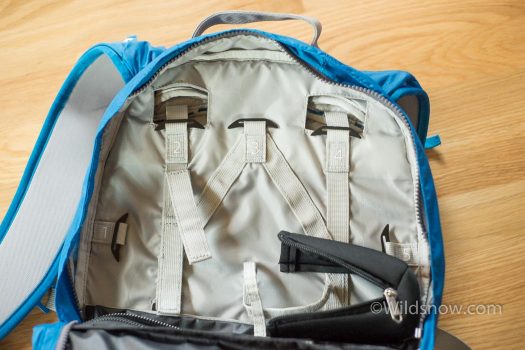
The airbag compartment of the Speed 27, without the airbag components. Notice the 5 metal toggles that attach the airbag to the pack. The neoprene sleeve is for the airbag cylinder.
BCA is offering the new system starting fall 2017, in two packs: the Speed 27 and a Speed 17 (the latter of which is clearly too small to be relevant in the world of WildSnow dot com). Current Float packs will remain the same for next year, with the same airbag system that they currently have. It’s strange they’ll be offering both systems concurrently. I guess they have their reasons.
Sidebar: From what myself and Lou Sr. have seen during this winter’s travels, we can say that next winter is going to be interesting when it comes to airbag packs. We expect to see quantum improvements in the disappointingly heavy electric “fan” packs, gas pack weights-prices becoming ever more reasonable, perhaps optional balloons made from thinner “Dyneema” type fabrics, better leg loop systems, more options for those excellent carbon gas cylinders, and so on.
The Speed 27 pack sack is obviously designed to be lightweight as well. The pack is superficially similar to a current Float 32 that has been put on a diet. This is a clamshell design, but only has one zipper that opens to access the main compartment. Inside you’ve got a divider with space for a shovel and probe, as well as small mesh pocket. The outside of the pack has one compression strap on either side, as well as an ice axe carry system that doubles as the diagonal ski carry strap. That’s about it as far as the features go; it’s certainly stripped down. We like that.
I’ve been using the pack for the later part of the winter this year. It is quite a bit smaller than the Float 32 that I’ve been using for the past few years. With the airbag components taking up less space, the difference evens out a bit, but the speed 27 is still smaller. The pack is big enough to fit my touring gear for a small-medium size day of backcountry skiing. However, if I try to bring a ski-cutting rope, or some extra layers, or other extra equipment, the pack begins to get maxed out. The avy pocket is also fairly short and narrow. My BCA shovel is a tight fit, and my SMC snowsaw is almost too long for the pocket.
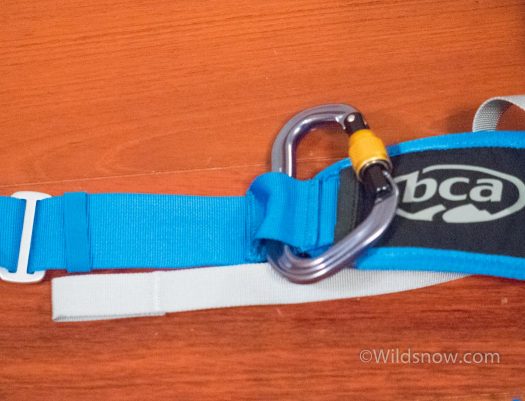
I’ve been using a carabiner for attaching my leg loop for years. BCA now includes a sewn slot on the waistbelt where you can put in your own carabiner. Nice.
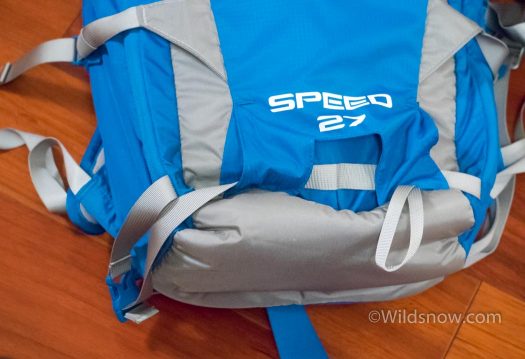
Ice axe carry strap doubles as a diagonal ski carry strap. Cool idea though it only works with narrower skis; fatter skis can be held with the lower strap.
Other than the size issues, the pack has worked very well. It carries well, and is comfy. The minimalist ice axe/ski carry strap is genius. The pack doesn’t have a helmet carry net, but it works well to clip a removable one to the outside.
Love-hate relationship with zippered clamshell pack. One the one hand, I like having easy access to all my stuff with one big zip. On the other, I don’t like that the pack volume isn’t expandable, and the zipper gets hard to close when the pack is at capacity. The light weight of the pack is, however, awesome. It saves a full pound off my old airbag pack (a first generation Float 32). I can certainly feel the weight reduction when it’s on my back.
BCA has always had an excellent existing airbag system, and they did an excellent job improving it. They made it lighter and more compact, while keeping the refill process and basic functionality the same. Bravo. For a clamshell, the pack is well designed, and is nice and light. I’m looking forward to BCA implementing their new airbag system into more packs.
Specs:
Speed 27 weight without airbag components: 1410 grams (3lb 1.7 oz)
Speed 27 weight with airbag components: 2710 grams (5 lb 15 oz)
Float 2.0 airbag components: 1200 grams (2 lb 10 oz)
1st Gen Float 32 airbag with components: 3062 grams (6 lb 12 oz)
Float 1.0 airbag components: 1394 grams (3 lb 1.2 oz)
Louie Dawson earned his Bachelor Degree in Industrial Design from Western Washington University in 2014. When he’s not skiing Mount Baker or somewhere equally as snowy, he’s thinking about new products to make ski mountaineering more fun and safe.

